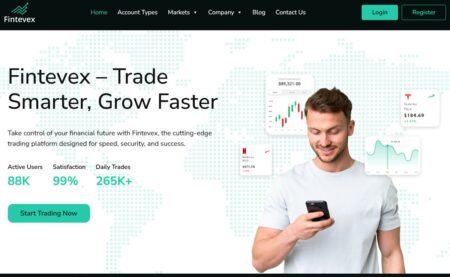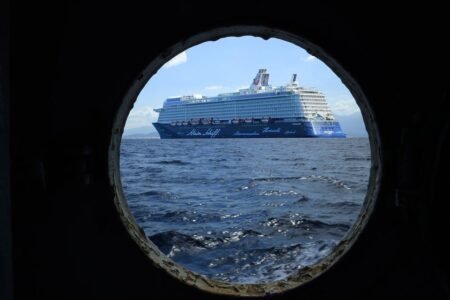In order to deliver steady growth and create jobs across the Union, member governments must run their economies according to the same sound principles of economic management. The European Commission believes that the keys to success are close policy coordination, peer pressure and consensus. The single currency, the euro, is seen as a jey part of this process.
Advertisement
All EU member states are part of economic and monetary union (EMU), whose purpose is to integrate the economies of EU countries more effectively. The roadmap for spurring growth and creating jobs in a socially cohesive and environmentally responsible Union is the ‘Integrated Guidelines Package’ for the period 2005 to 2008, which was adopted in July 2005.
This package represents a comprehensive strategy of macroeconomic, microeconomic and employment policies. Member States draw up national reform programmes within this framework, using the tax and social welfare policy mix they think best suits national circumstances. In implementing the guidelines, importance is attached to the involvement of regional and local government, and civil society.
The single currency
Twelve of the 25 member states have taken integration a major step further by adopting the same currency, the euro: Austria, Belgium, Finland, France, Germany, Greece, Ireland, Italy, Luxembourg, Netherlands, Portugal and Spain.
The euro benefits individuals and business. Individuals save money by not having to change money when travelling within the euro area. Consumers can compare prices more readily, and this promotes price competition. They pay less to transfer money across borders. Businesses reap these same benefits and more. Other countries will more readily accept invoices in euro than most of its predecessor currencies, thus reducing their foreign exchange risk.
Adopting the euro
All EMU members are eligible to adopt the euro, but Denmark and the United Kingdom have opted to remain outside the euro for the time being, and Poland and Sweden have no target date for joining. Estonia, Lithuania and Slovenia, on the other hand, envisage adopting the euro in 2007, followed by Cyprus, Latvia and Malta in 2008, Slovakia in 2009, the Czech Republic and Hungary in 2010. In taking their decision and running their economies in a way which meets the entry criteria, these countries weigh the disadvantages (less control over their inflation, interest and exchange rates) against the likely benefits which include having the same currency as major trading partners, greater credibility in international financial markets and, consequently, greater flows of investment.
The entry criteria for the euro include two years of exchange rate stability before joining. This is achieved through membership of the ‘Exchange Rate Mechanism’ (ERM), which keeps fluctuations between the euro and the member currencies within pre-defined limits. Cyprus, Estonia, Latvia, Lithuania, Malta, the Slovak Republic and Slovenia have already joined the ERM.
Apart from exchange rate stability, there are four other criteria for adopting the euro. These relate to interest rates, the budget deficit, the inflation rate, and the debt-to-GDP ratio.
The Stability and Growth Pact
The disciplines of the Stability and Growth Pact (SGP) keep economic developments in the EU, and in the euro-area countries in particular, broadly synchronised. They prevent member states from taking policy measures which would unduly benefit their own economies at the expense of other EU countries.
A key principle of the Pact is the rule that all member states keep their budgets close to balance or in surplus. The twin anchors of the pact are the rules that the deficit must not exceed 3% of gross domestic product (GDP) and that the debt-to-GDP ratio should not be more than 60%. Member states are expect to create a cushion against the possibility of future deficits by putting more money aside in the ‘good times’ when budgets are close to or in surplus and of reducing government debt to the threshold level.
A revision in March 2005 based on the first five years of experience of the Pact left the levels of the twin anchors unchanged, but introduced greater flexibility in exceeding the deficit threshold in hard economic times or to finance investment in structural improvements to the economy. It also gave member states longer to reverse their excessive deficits. Ultimately, if they do not bring their economies back into line, corrective measures, or even fines, can be imposed.
The European Court of Justice is the ultimate arbiter of how the Pact should be interpreted.
Ensuring economic policy coherence
One of the European Commission’s jobs is to assess whether each member state’s economic policy is in line with the EU’s agreed objectives – economic, social and environmental – and to provide early warnings if it believes a deficit is becoming abnormally high or that some other SGP rule is about to be breached.
Each year, member states provide the Commission with detailed information on their economic policies and the state of their public finances. Euro-area countries provide this information in ‘stability programmes’. Other member states do so in the form of ‘convergence programmes’. The convergence programmes contain one element not needed in the stability programmes, i.e. information on how these economies measure up against the criteria which would apply if they wanted to join the euro.
The role of the ECB
When the euro was launched in 1999, the European Central Bank (ECB) took over full responsibility for monetary policy throughout the euro area. This includes setting benchmark interest rates and managing the euro area’s foreign exchange reserves.
The ECB also has the job of ensuring that payments move smoothly across all EU borders, not just within the euro area, and is the hub of a real-time network for large payments transactions, known as TARGET, which helps EU financial markets work more efficiently.
The ECB and the Commission are working jointly on a Single Euro Payments Area (SEPA). This will make virtually all forms of cross-border euro payment faster and no more expensive than domestic payments by 2010. At the moment, only credit transfers up to 50 000 are treated like domestic payments and it is virtually impossible to make some types of payment (e.g. direct debits) cross-border. This will change no later than 2010 thanks to the SEPA, bringing down costs for everyone from large companies to parents wanting to send money regularly to students at a university.
EU Economic and Financial Affairs web links
European Commission Economic and Financial Affairs DG
Euro essentials
EU tender and funding opportunities and for SMEs
Summaries of EU Legislation in Force: Economic and Financial Affairs
Recent case-law of the Court of Justice and the Court of First Instance : EU Economic and Financial Affairs
Further information on EU Economic and Financial Affairs on Europa







